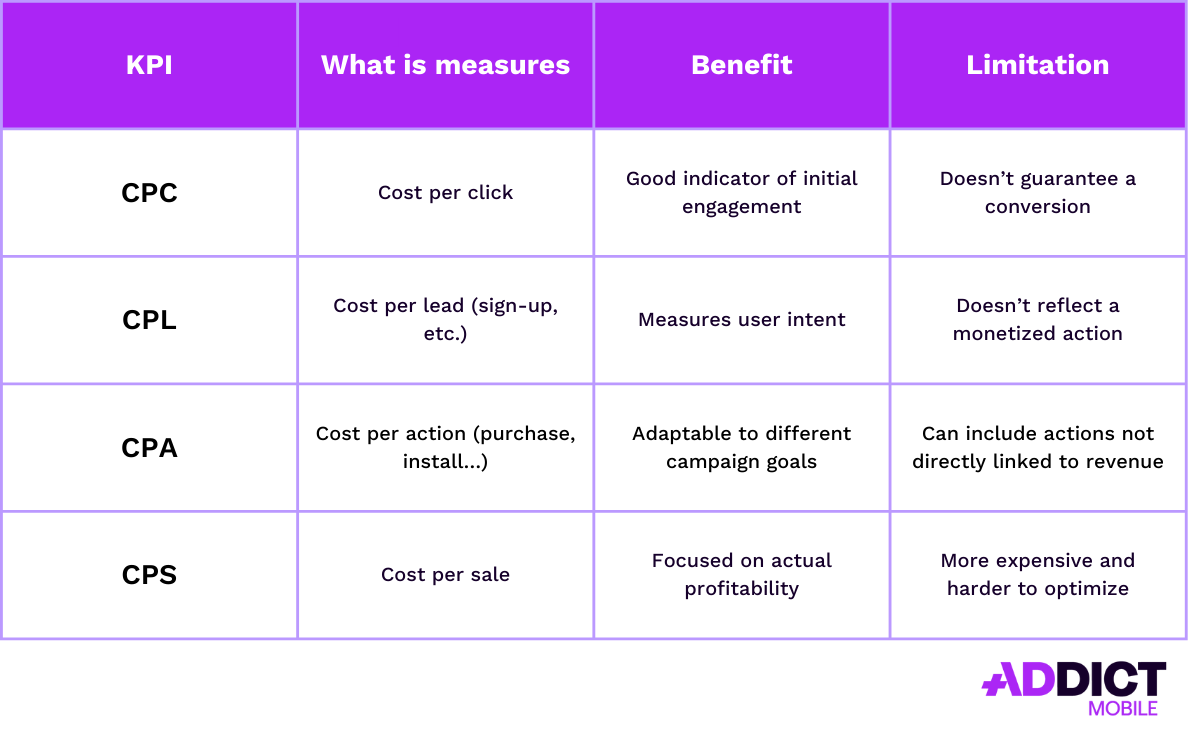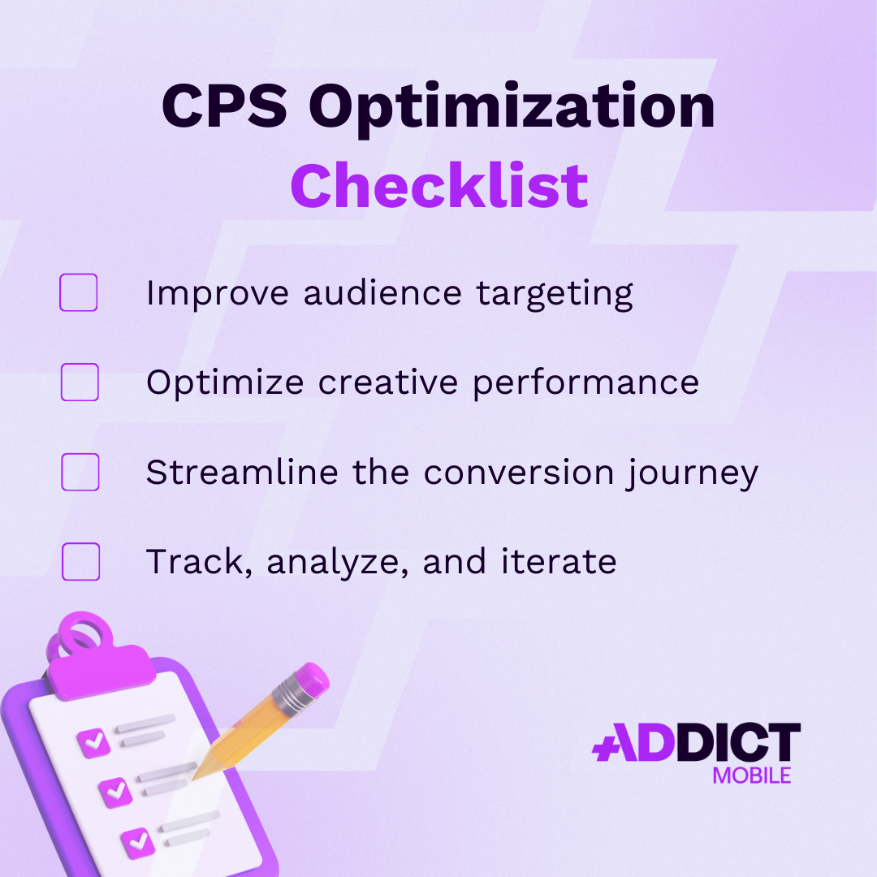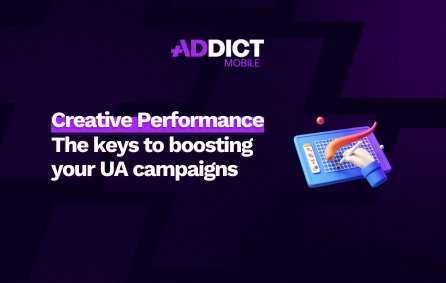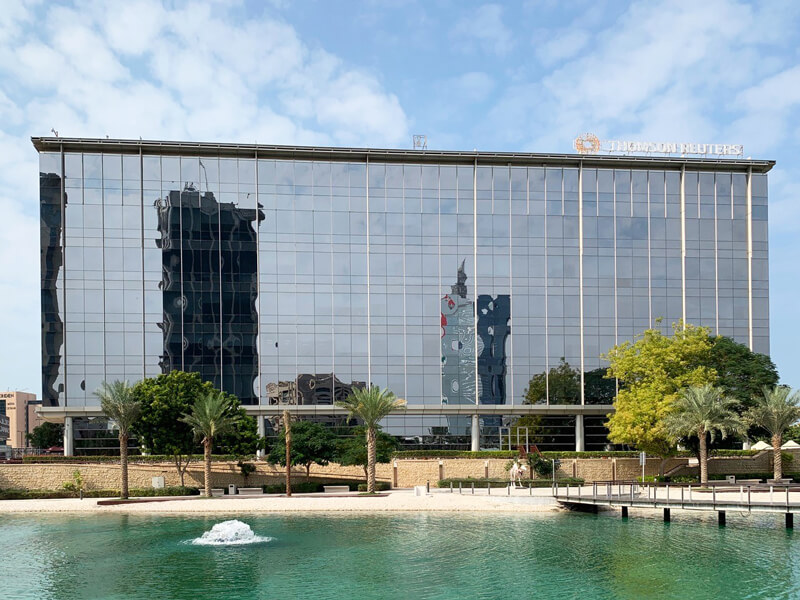Mastering Cost per Sale (CPS) to drive truly profitable acquisition
Introduction
In a context where every dollar spent must deliver real returns, CPS stands out as a key metric. More demanding than a simple cost per click or cost per lead, it focuses on what really matters: a campaign’s ability to turn an audience into paying customers.
What is Cost per Sale (CPS)?
Cost per Sale (CPS) is a metric used to measure how much is spent on advertising to generate a single sale. Unlike other KPIs that focus on intermediate action, such as clicks, installs, or lead generation, CPS zeroes in on the ultimate goal: a completed purchase.
It’s particularly relevant in mobile acquisition strategies where return on investment (ROI) is a priority, especially for apps that rely on:
- e-commerce, where purchases happen directly,
- subscriptions, where the sale comes from a sign-up,
- or gaming with in-app purchases, where monetization occurs post-install.
In mobile user acquisition, CPS gives a clear view of true profitability by linking advertising spend directly to revenue.
How is CPS calculated?
The formula is simple:
Cost per sale = Advertising spend / Number of sales generated

Example: if a campaign costs $3,000 and generates 150 sales, the CPS is $20.
This calculation can be applied at different levels:
- Globally, across all acquisition channels,
- By source, such as Meta, Google Ads, DSPs, etc.,
- By campaign, creative, country, OS,
- Or even by ad format, like video or UGC.
Our secret formula for UGC that converts
The goal is to understand where and how your sales are generated at the best possible cost.
Is there an average CPS benchmark?
There’s no universal cost per sale benchmark, it can vary widely depending on:
- Industry (e.g. retail, VOD, gaming…),
- Customer value or LTV (Customer Lifetime Value),
- Geography,
- Business model (one-shot purchase, subscription, freemium…),
- And the type of conversion tracked (first-time purchase vs. repeat purchase).
Competition, product maturity, and seasonality (e.g. Black Friday, holidays) also play a key role.
What matters isn’t having the lowest CPS, but a CPS that makes sense compared to the value of each sale. A $40 CPS might be great if each sale brings in $200 in revenue.
Why is CPS a key KPI in mobile acquisition?
Cost per sale is one of the most business-driven metrics in user acquisition. It gives a direct view of performance by connecting spend with results. Here’s why it matters:
1. A metric aligned with profitability
Unlike CPC or CPM, CPS only accounts for actual sales. It reflects how effective a campaign truly is across the entire funnel.
It pushes you to optimize for value, not just for volume.
2. Better targeting and personalization
By analyzing cost per sale by channel, segment, or user profile, you can quickly identify the audiences that convert best. It helps refine targeting and messaging to reach the right users at the right time.
3. A lever to improve ROI
CPS is directly tied to margin. The lower it is, the more profitable the campaign. It’s a reliable indicator to assess whether your strategy is truly ROI-positive, or if adjustments are needed.
4. A way to compare and prioritize channels
Comparing cost per sale across channels or formats makes it easier to make objective decisions. While CPC or CPI only tell part of the story, CPS shows what’s really driving revenue.
CPS vs CPC, CPL and CPA: what’s the difference?

CPS vs CPC
CPC tracks clicks, not conversions. Cost per sale goes further, it tracks actual sales. A low CPC might seem efficient, but if users don’t convert, the campaign isn’t really performing. CPS highlights true business impact by factoring in revenue.
CPS vs CPL
CPL measures how much it costs to acquire a lead or sign-up, an expression of interest. CPS, however, tracks completed purchases. The two can work together, but only CPS gives a direct view of how profitable your acquisition really is.
CPS vs CPA
CPA measures a specific action, like a sign-up, trial, or purchase, but not necessarily a paid one. CPS focuses only on monetized conversions. It’s a better fit when your goal is clearly tied to revenue and profitability.
How to optimize your CPS: Best practices
Lowering your cost per sale doesn’t mean spending less, it means using your budget more efficiently. Here are the main levers you can activate:

1. Improve targeting
More precise targeting helps you reach users who are most likely to convert.
- Prioritize high-potential profiles, like lookalike audiences based on paying users or cart abandoners.
- Segment based on behavior, customer value, or geography.
- Exclude low-quality or already-converted audiences to avoid diluting your spend.
2. Optimize creatives
Strong creatives help boost post-click conversions and reduce your CPS.
- Test different messages focused on product benefits, limited-time offers, or reassurance elements.
- Use formats that build trust: testimonials, product demos, UGC…
- Adapt messaging based on audience maturity (awareness, consideration, conversion).

Boost your UA campaigns with Creative Performance
3. Streamline the conversion journey
A complicated purchase path can stop even the most interested users.
- Cut unnecessary steps and improve page load speed, clarity of message, and CTA visibility.
- Reassure users with reviews, guarantees, or secure payment badges.
- Offer incentives like discounts, free trials, or bundled deals to help close the sale.
4. Measure, analyze, iterate
Regular tracking helps you understand what’s driving your CPS up, or bringing it down.
- Run A/B tests on creatives, messaging, and landing pages to identify what performs best.
- Monitor CPS by channel, OS, audience, or campaign to guide your adjustments.
- Adjust bids based on ROAS or average customer value.

Do not hesitate to contact with our teams
Addict can support you to improve your performance.
Conclusion
Cost per Sale is a must-track KPI for managing performance-driven mobile acquisition. It gives you a clear view of true campaign profitability, by linking ad spend directly to business outcomes.
Used well, it helps you make better decisions, optimize continuously, and scale your results sustainably, by focusing not on volume, but on value. A solid CPS means every euro invested is actively working to generate revenue.


